How to add UTM parameters to (most) social media platforms
If you run any sort of paid web advertising, especially paid social, you will want to be able to track how effective your ads are, and one way to do that is to use Google Analytics.
In order to effectively track paid campaigns in Google Analytics you need to add UTM parameters to any URLs you use for campaigns. Many social media websites support automated tagging or using dynamic tagging, this guide shows you how to find and use them.
Extremely Brief Guide to UTM tagging
If you’re reading this you probably already know what UTMs are and how to create them so feel free to skip it.
By default, Google Analytics only understands two things when it comes to campaign source identification: “what is the host name of the referrer website” (for twitter this is t.co, not even twitter.com) and “is the referring website a search engine or not”.
Based on that information, your traffic is put into one of three categories: Organic Search, Referral, or Direct*. If you want Google Analytics to categorise your traffic in another way (such as Paid Social), you need to add UTM parameters to your links.
When I refer to “UTM tagging” I mean the process of add a few parameters to the end of the URLs you use in your ads to send a user to your campaign’s landing page. For example, adding the following to the URL (?utm_source=twitter&utm_medium=paid-social&utm_campaign=blog-posts) lets Google Analytics know that this is traffic from a paid twitter campaign called “blog posts”.
This string of letters doesn’t change where the destination URL points, it only changes how Google Analytics reads it, and using these means you can conduct campaign analysis with ease.
To create your own UTM tagged URLs, use Google’s Campaign URL Builder. Once you have done that, head to your ad platform of choice.
*Google Ads is special: if you enable gclid autotagging, that understood as “Paid Search”
Meta (Facebook & Instagram) Ads
If you run Meta Ads via Meta for Business to serve to Facebook and Instagram, this is how you add links with UTM tracking to your campaigns.
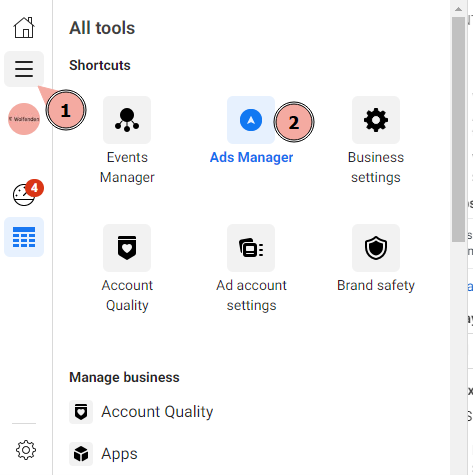
Open up “Ads Manager” in the “All Tools” menu (hamburger).
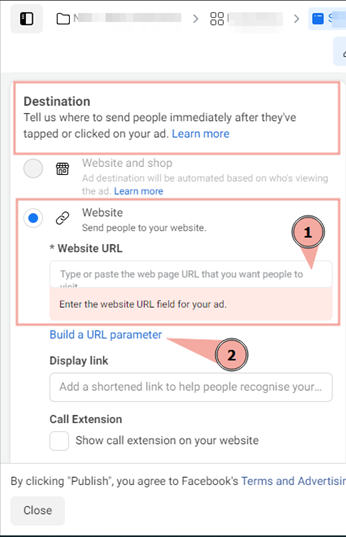
When you create an ad or select the ad you want to edit, scroll down to “destination”.
You can edit multiple ads at once by doing this at campaign level if required, or by clicking “edit each ad” if prompted. The “Website URL” is where the destination URL (without UTM parameters) goes.
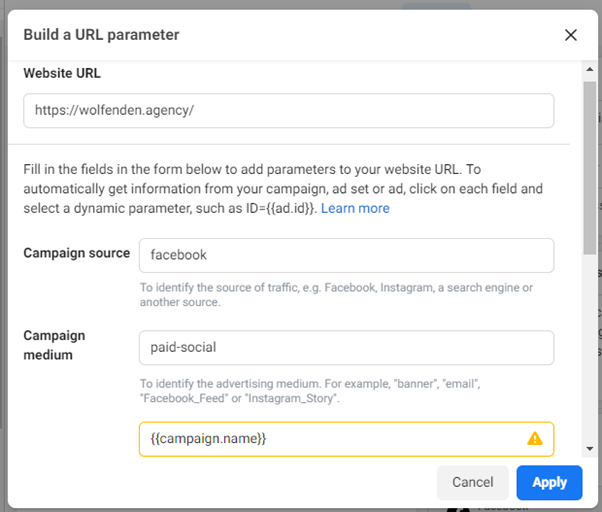
Finally, click “Build a URL Parameter” underneath the Website URL.
Here you can fill in source, medium, campaign name, campaign content and any custom parameters required. These can be dynamic is needs be such as using {{campaign.name}} instead of manually naming the UTM campaign. You can read more about Meta’s dynamic parameters here.
The ad can then be published.
Pinterest Ads
When creating a Pinterest Ad, you have the option to choose to promote a Pin you need to have already created via an ad. It is important therefore to tag your Pins with UTM parameters if you want to promote them with ads.
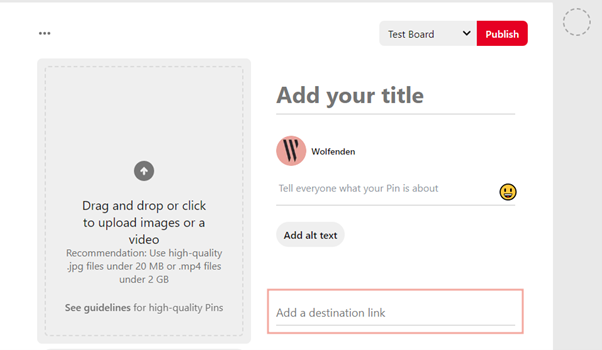
When creating or editing a pin, all you need to do is add your full destination link (including UTM parameters) so that any link clicks are associated with the paid ad.
When creating ads on Pinterest there are two ways to create ads: the default process is called “3 Step Ad Creation” and there is a more advanced approach called “advanced ad creation”.
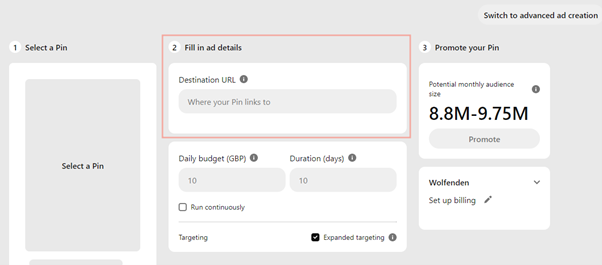
If you use the “3 step approach”, you just need to input your URL (including any UTM parameters) in the “Fill in ad details” section under “Destination URL”.
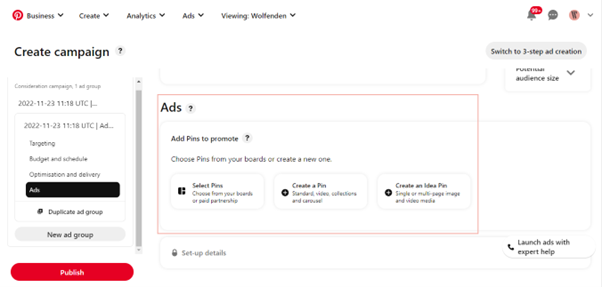
If you use the “advanced ad creation”, you will have the ability to select or create a Pin in the “Ads” section of the creation process, under “Add Pins to promote”.
Add the destination URL in the same way you have before.
Pinterest has support dynamic parameter tagging for ads. You can read more in the “Add dynamic tracking parameters” section of this article.
LinkedIn Ads
If you run LinkedIn Ads via LinkedIn Campaign Manager, you need to go to the “Advertise” section of LinkedIn (in campaign manager) and either create a new ad or select an ad to edit.

Select Advertise from the left hand menu. You can then select your campaign and ad.
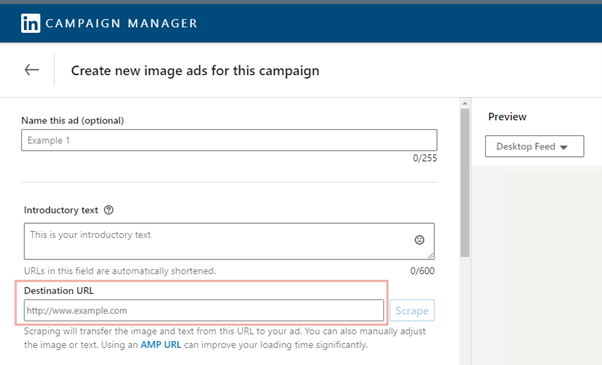
When creating or editing an ad, add your URL (with any UTM parameters) to the “Destination URL” field. LinkedIn does not support dynamic parameters.
LinkedIn’s guidelines offer the following advice for adding parameters to their text ads: do not use quotation marks, and if you are using special characters, consider using a URL encoder to replace them.
Snapchat Ads
If you create Snapchat Ads using Snapchat for Business there are two ways to create ads: Instant Create or Advanced Create.
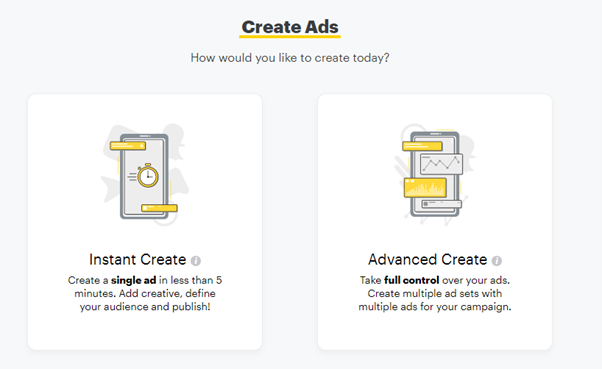
With Instant Create, the options for UTM or other parameter tagging are limited – you can add UTM tagged URLs to your Ads easily, but not in a very robust way. This is good for if you have a small set of URLs.
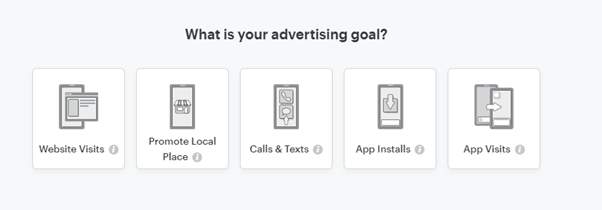
When creating an ad you get to choose the purpose of your ad. If you choose “Website Visits” you can then add a link to your website.
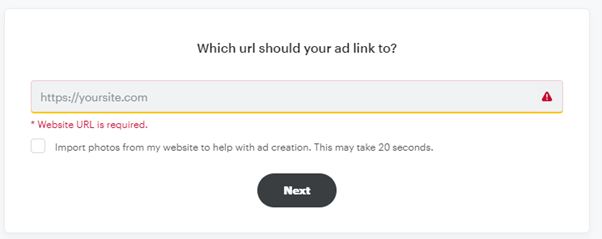
You are immediately asked for a link –include UTM parameters in this link.
Using Advanced Create gives you a lot more control over your ads, as well as the ability to ad parameters (for example UTM parameters) to your destination URLs.
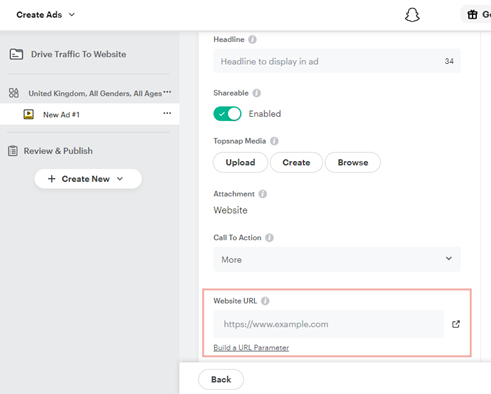
If you use the “Advanced Create” you have the option to Build a Parameter URL.
Build your ad as normal, and when you get to the “Ad Details” page, scroll down to where it says “Website URL”, underneath that you can click “Build a URL Parameter”.
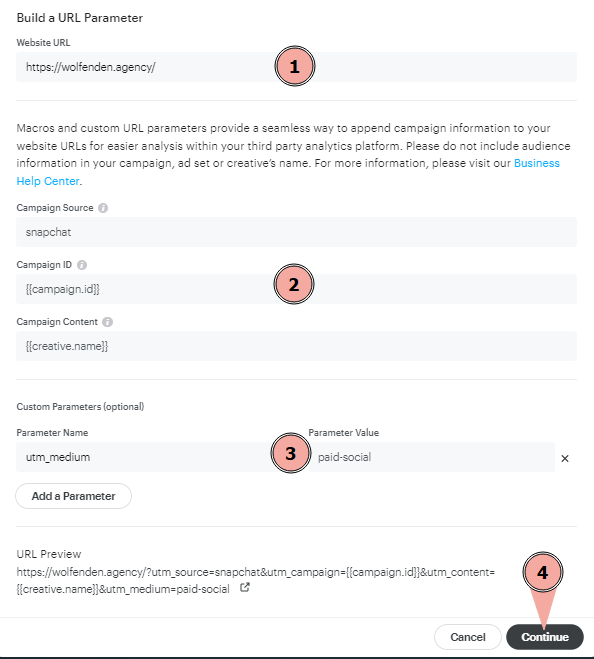
You can use your own static UTM parameters, or you can use Snapchat’s dynamic parameters (such as {{createive.name}}).
I would recommend adding utm_medium as a custom parameter for further control. You can preview the URL before pressing “continue” to ensure it looks how you would expect.
TikTok Ads
If you create TikTok Ads using TikTok for Business, you can create ads using Simplified Mode or Custom Mode.
You can also use TikTok for Business to advertise on Pangle or TikTok’s News Feed App Series (icnlduing BuzzVideo, TopBuzz , News Republic and Babe) if you require.

Similar to other ads platforms, you have to determine what your advertising goals are – selected a website related goal (for example Traffic or Website conversions) will allow you to input a custom URL to your ads.
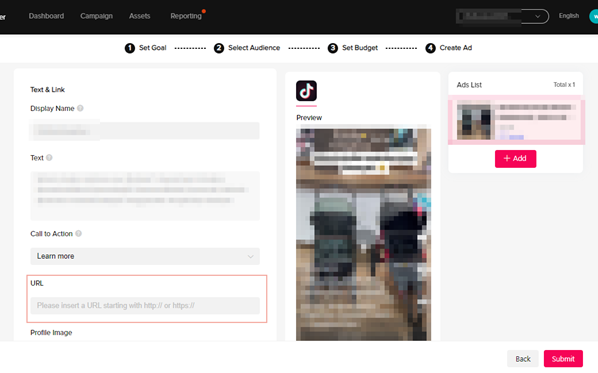
If you are using the Simplified Mode, during Step 4, under “Text & Link”, you can add a URL (you will have to add UTM parameters yourself), before selecting “submit”.
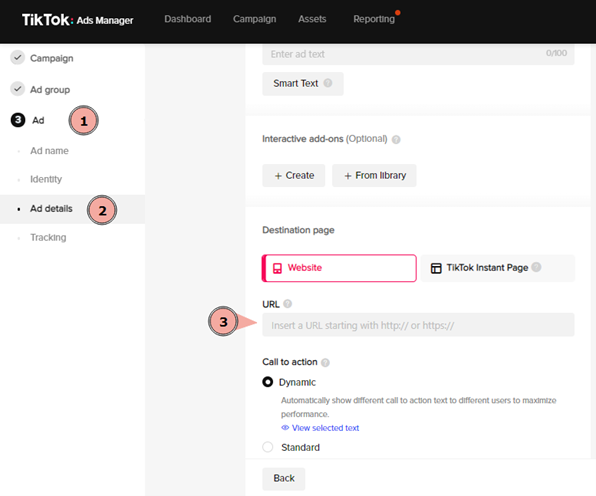
In Custom Mode, you have a lot more options including the options to name your campaigns and ads for easier reporting.
In section 3 (Ad), under “Ad Details” you can add your URL under “Destination Page”.
TikTok has a set of dynamic macros that you can use to pull in campaign name, ad id, etc. – you can view more in this article in the final section called “TikTok Ad Level related name and ID related macros”. For example __CAMPAIGN_NAME__ is the dynamic attribute that relates to Campaign Name.
Twitter Ads
If you create Ads using Twitter Ads, head over to Campaigns > Ads Manager to create or edit an existing ad.
Like with many other social ad platforms, you’re allowed to choose your Campaign Objective, which changes how your potential ad may look. Choosing “Website Traffic” will enable you to create a link back to your website.

You can choose the Simple of Advanced ad making version, both can create “website traffic” ads.
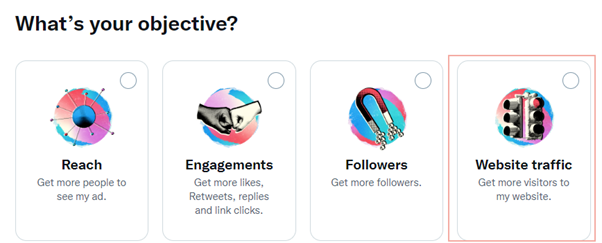
If you’re using the simple version, select “Website traffic” from “What’s your objective?”.
Once you have selected your objective you can compose your ad tweet just like any other tweet.
Now, in order to add a link to your website, you need to first upload media (such as a picture).
Once that is done you will be prompted to add a link. Click “Add media” under the “Ad text” section, and choose an image to display alongside your ad.

You’ll see that only the website hostname is displayed – so you can use as many UTM parameters as required within your Website URL and the ad will still look clean.
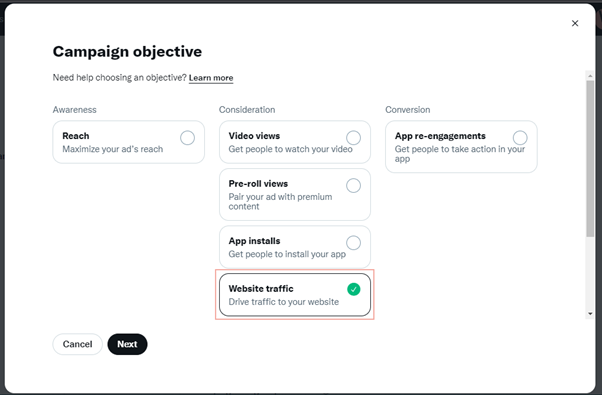
If you choose Advanced, select “Website traffic” from “Consideration” as your campaign objective before creating your ad.
Similar to the Simple version, you need to add your media to your ad before you can add a URL.
You can do this in the “Ad details” section of the creation process, underneath “Media”. You can then add your Headline and website URL.
As before the display URL is reduced to the site hostname, so you can add as many UTM parameters as required and it will look clean in the ad preview.
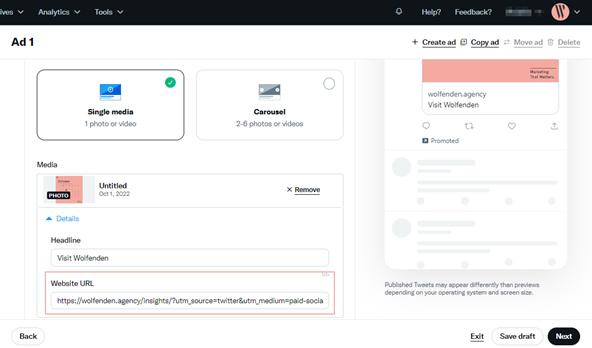
Twitter Ads at this time has no way to utilise dynamic parameters, so utm_campaign and any other custom UTM parameters will have to be manually added for each campaign.
Reddit Ads
There is some debate as to whether Reddit is a social media website or not, however it’s still useful to have information about adding UTM tagging for Reddit Ads in you are running them.
When creating a Reddit Ads campaign, you define the goal of your ad, which then defines what payment model you use. For example, selecting “traffic” puts a cost per click model into place.
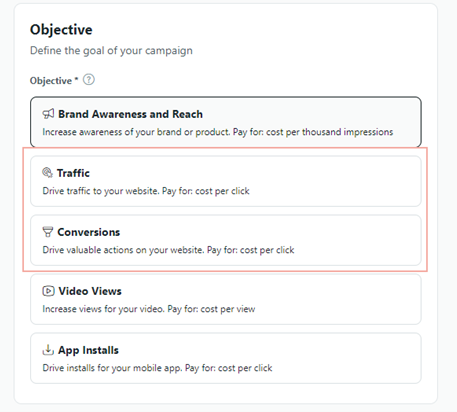
Select “Traffic” or “Conversions” to create an ad that links back to your website.
When you have named your campaign and ad group you will then be in the “New ad” section of the ad creation process. It is here that you can add your destination link.
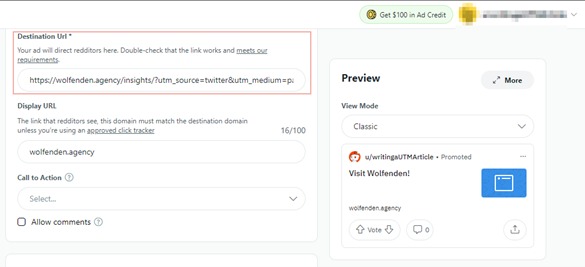
Under “Creative” there is an area called “destination URL” where you can place your URL. Your display URL and your landing page URL must match as per Reddit’s guidelines, which means you can choose not to display UTM parameters in the Display URL if you have chosen to use them in the Destination URL.
It is likely that if you have a long URL it will get shorted to just the website name, regardless of the page path.
Reddit Ads allow the use of macros in URL parameters such as {{AD_NAME}}. A full list of macros can be found in this article.
Tumblr Blaze Pro
Previously Tumblr did not have an easy way to create true paid ad campaigns, and the best way of promoting brands was by paying to promote organic posts – until now.
Tumblr has recently launched a new self-serve paid ads platform called Tumblr Blaze Pro which work in a similar way to Meta for Business – so when we configure these new Blaze Pro ads, we can add UTM tagging to them.
First, you need to create your ad within the platform.
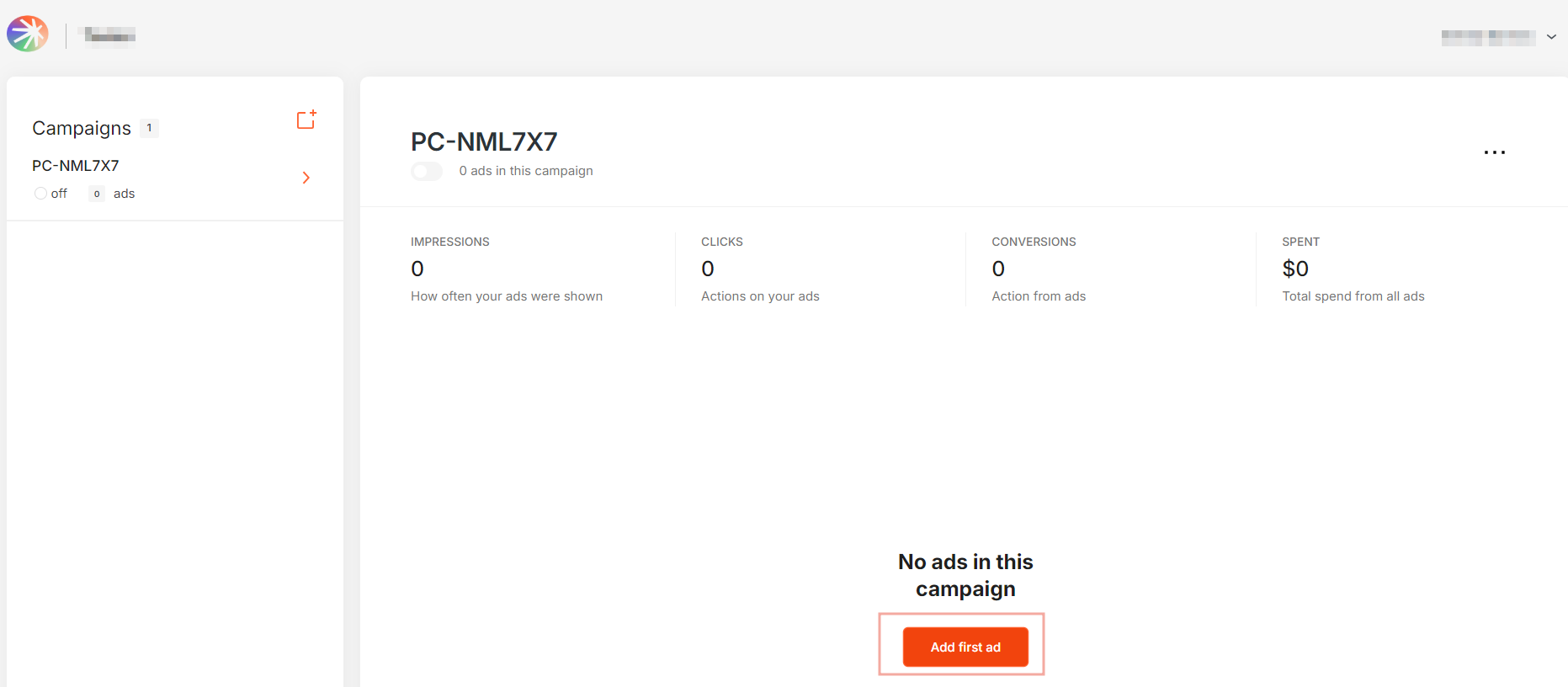
Then to add the UTM parameters is pretty simple.
Scroll down to the “Ad details” section and go to the sub-section called “Destination URL” and “URL Parameters”. This is where you can add you UTM parameters, but be sure to format them with one per line so it doesn’t get confused.
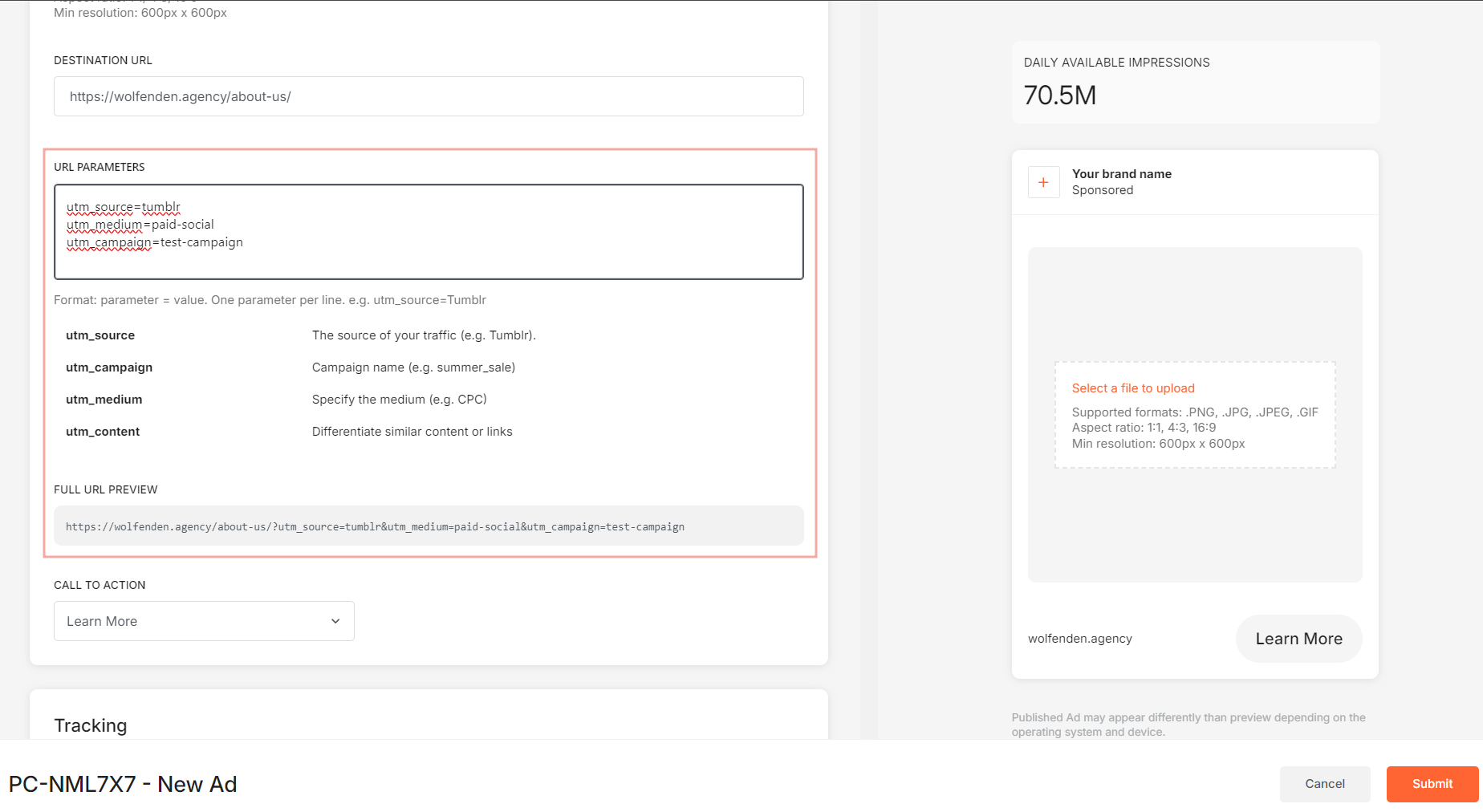
A benefit of this platform is that you can also preview each link before setting it live to ensure everything is correct and looking good.
You can also get in touch with Tumblr’s Tumblr Ads support team if you need to to determine the best way to integrate ads and tagging for your brand, as of course you can still pay to promote organic posts too.
Resources
Here are some further resources regarding adding UTM tagging to your ads:
Meta Business Help: Add URL parameters to your ads
Pinterest Help Centre: Add third-party and dynamic tracking to your ads
LinkedIn Help: Create a LinkedIn Message Ad Campaign
Snapchat Business Help Centre: URL Parameters and Macros
TikTok Business Help Centre: Mobile Measurement Partner (MMP) Tracking
Latest Insights From The Team.
Explore our team’s latest thoughts and actionable advice from our blog to support your digital marketing strategies.